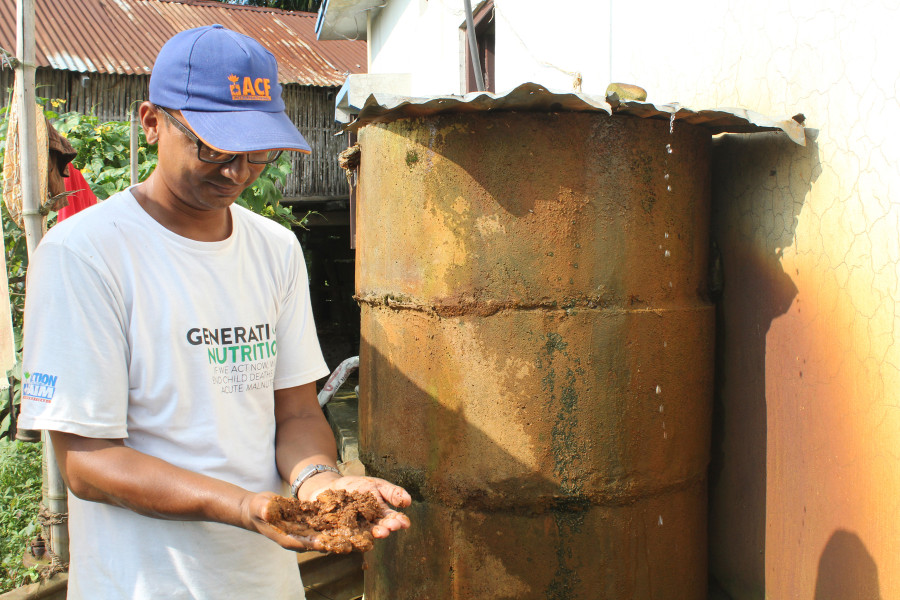Editorial
Unsafe to drink
Poor water supply has forced people to turn to unsustainable groundwater extraction.
Reports of the residents of Kankai Municipality in Jhapa having to deal with high iron content in their main water source is not something any community should be forced to face. What’s worse, Kankai is not the only place in Nepal with such an issue. Many parts of the Tarai and even places like the Kathmandu Valley have been encountering this problem, which stems from the people being forced to rely on untreated groundwater to fulfil their daily water needs. The high concentration of iron in the groundwater, exacerbated by the presence of high arsenic concentrations in some places, has given the people additional health problems. Moreover, the unchecked use of groundwater can have unintended and grave consequences on the water table, thereby disrupting water security in the long run. The authorities concerned not only need to ensure that the public has access to safe water, but they also need to come up with a comprehensive and sustainable water resource management plan.
Because people lack access to potable water, let alone an adequate supply, they have had to rely on personal or community-based groundwater extraction. The situation is prevalent all along the Tarai and in remote areas. But urban areas have the same problem, too. Due to delays in the completion of the Melamchi Drinking Water Project, more than half of the Kathmandu Valley’s residents have to rely on groundwater extraction. Such depletion of aquifers, which are not allowed to recharge fast enough, can lead to the creation of sinkholes or even the sinking or settling of entire areas, as has happened in Bangkok and Mexico City. These can lead to issues with flood drainage in the future. The unsustainable depletion of aquifers can also lead to water shortages in the long run—compromising on water security in the days to come to fulfil the needs of today. Moreover, such extraction ends up concentrating chemicals like manganese and iron in the remaining water, as studies in Kolkata, among other places, have shown.
Indeed, in Nepal, the danger of toxicity has already reared its head. In places like Kankai, locals have had to take medication to treat skin-related illnesses by bathing in water pumped out from the ground. The high iron content could lead to liver and heart problems, and even hemochromatosis—damaging other vital organs. Even in rural Tarai, where aquifers recharge faster than in urban spaces, iron and arsenic have been found in water extracted from the ground at concentrations unsafe for human consumption.
It is difficult to change consumption trends, especially for a basic commodity such as water. The onus is on the government to come up with a larger water supply management plan and to provide potable water free of risks to its citizens. The timely completion of projects such as Melamchi and Jamunkhadi Drinking Water Project, among others, is a must. Local governments also have to routinely test water sources for toxicity, and provide the people with filtration systems where there is no alternative to groundwater.
***
What do you think?
Dear reader, we’d like to hear from you. We regularly publish letters to the editor on contemporary issues or direct responses to something the Post has recently published. Please send your letters to [email protected] with "Letter to the Editor" in the subject line. Please include your name, location, and a contact address so one of our editors can reach out to you.




 7.12°C Kathmandu
7.12°C Kathmandu














